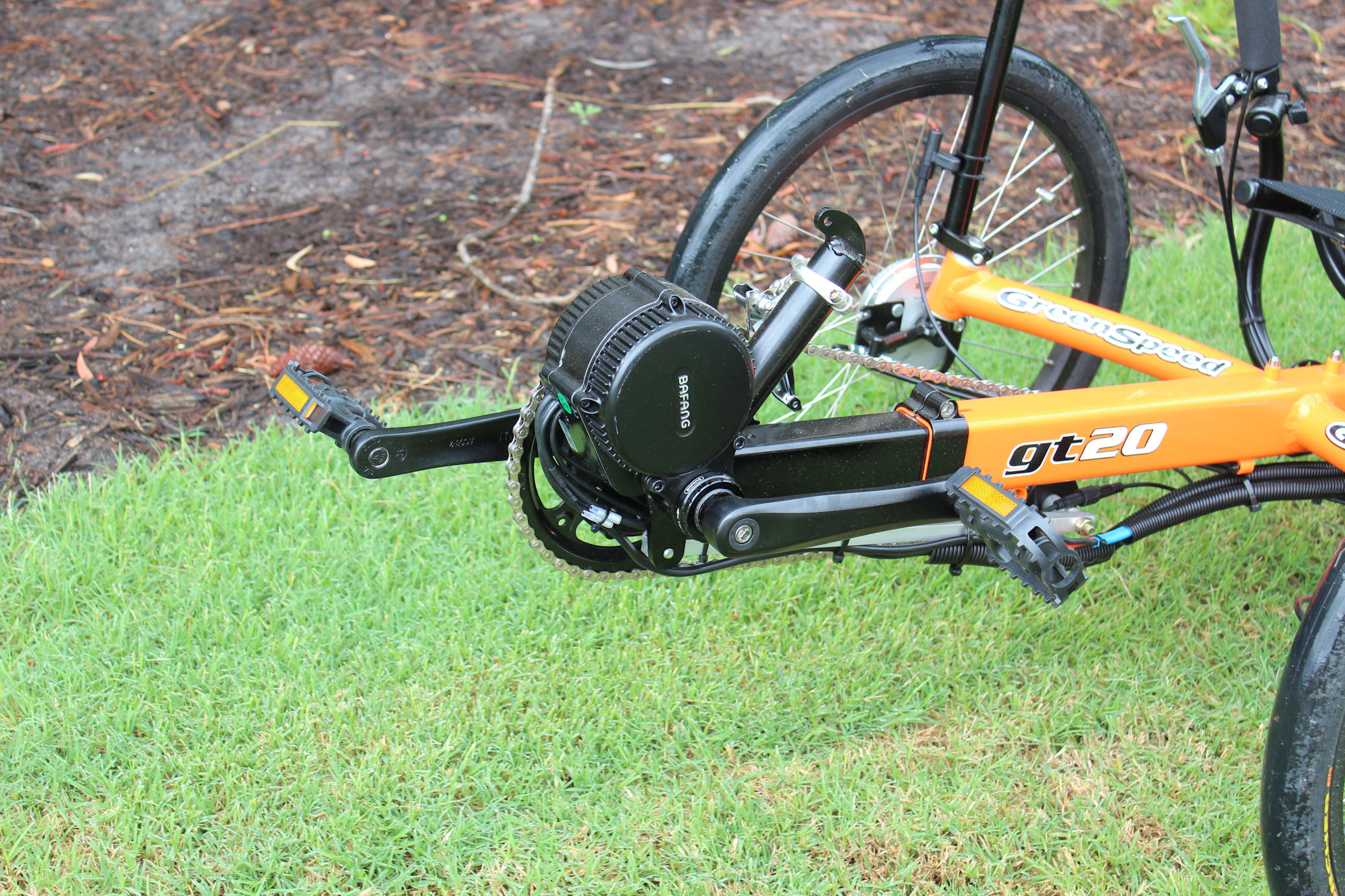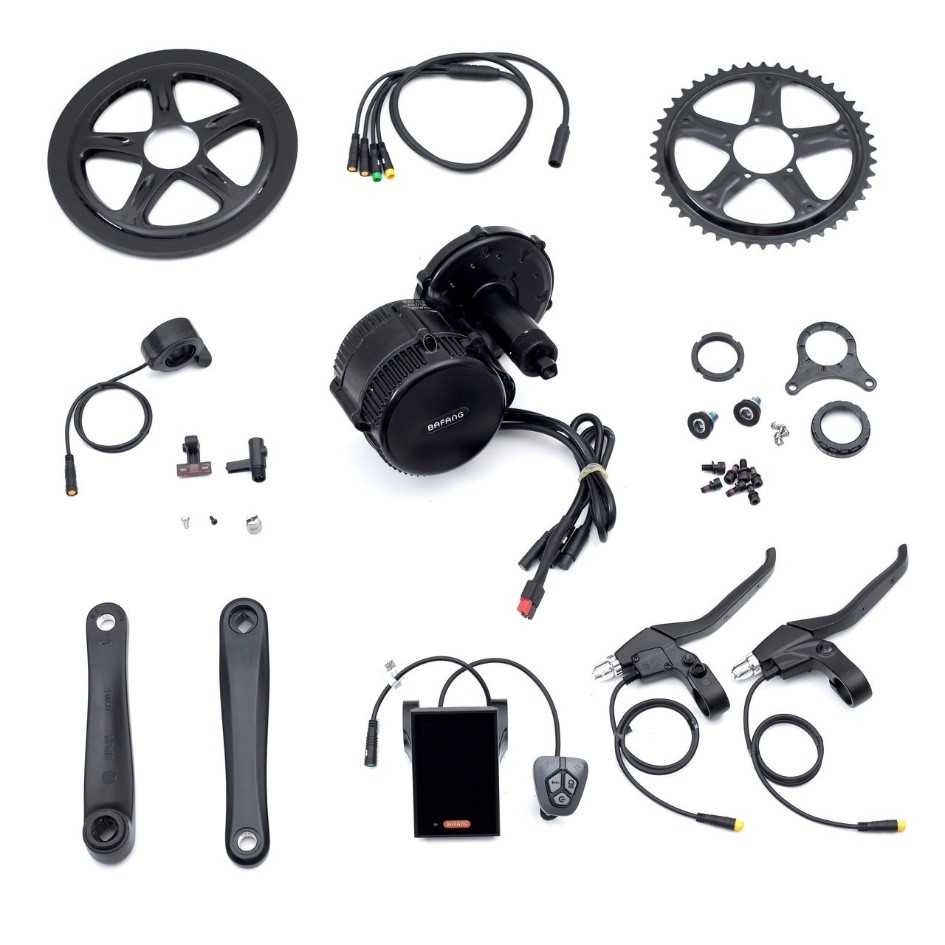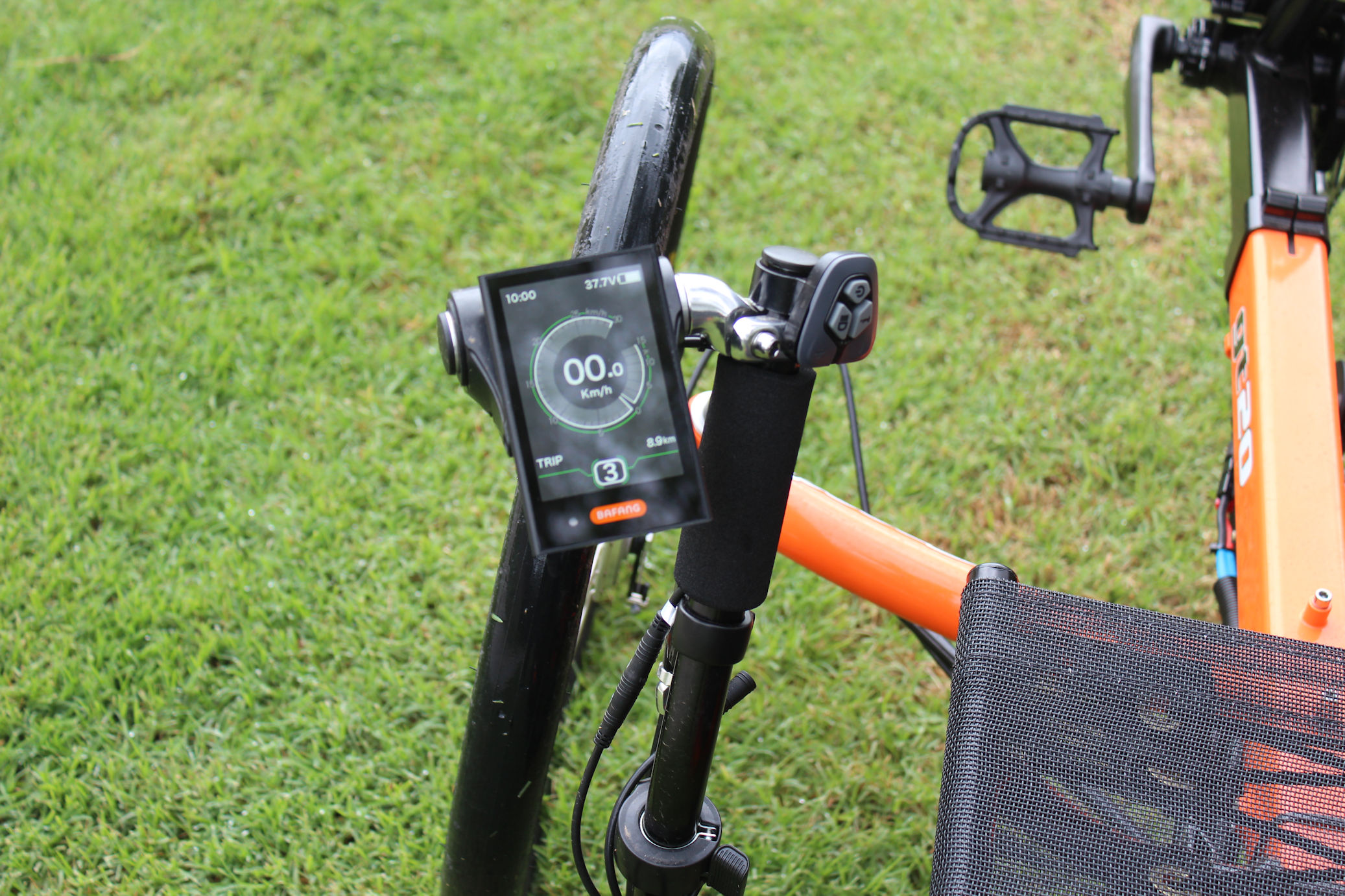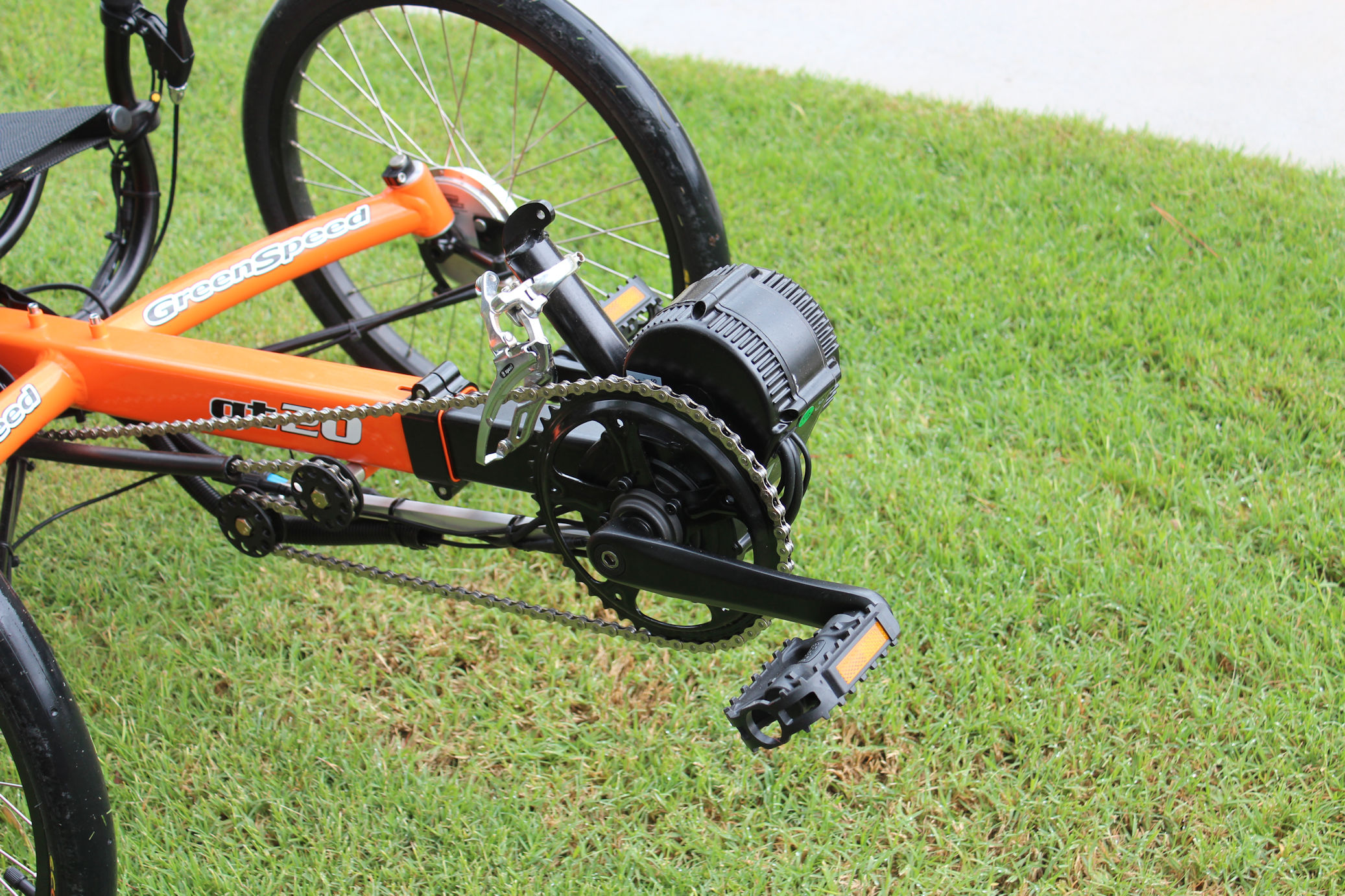Electric assist for bicycles is a growing market, but there are limited options for the recumbent cyclist. There are few original equipment manufacturers (OEM) fitting e-assist to trikes, and the problems with importing the batteries (and in-country support) makes the OEM fit problematic in Australia.
Essentially we are left with the do-it-yourself option, whether a dealer does it or it is truly DIY!
The choice between a hub motor (a motor built into a wheel) or mid-drive (motor built into the bottom bracket and crankset) is a bit personal, though finding a hub motor with the right width for the trike’s rear wheel spacing and gear options can be a challenge.
 For this fitment, we have chosen the Bafang BBS02 mid-drive, a well known brand with a number of re-sellers in Australia. The BBS** series are available in a range of powers, from 250 watt to over 1 kilowatt.
For this fitment, we have chosen the Bafang BBS02 mid-drive, a well known brand with a number of re-sellers in Australia. The BBS** series are available in a range of powers, from 250 watt to over 1 kilowatt.
Talking of power, a quick word on the legals is called for. Electric Assist bicycles in Australia are limited to 200 watt power, unless the bike complies with European directive EN15194 and is certified as complying. (Commonly termed a Pedelec, 250 watt max.) Queensland is further limited to 25kmh with power assistance. This rules out any DIY kit from complying with the 250 watt requirement as the certification applies to the whole bike….
We have chosen a 350watt version, and will be de-rating it via the software options available. Why 350 watt? Apparently the internal wiring is somewhat heavier than the 250 watt unit.
 So what’s in a kit?
So what’s in a kit?
The drive unit, display/controller, e-brake levers, speed sensor, and wiring harness. We added a gear change sensor, separate brake switches in case we wanted to keep the OEM levers, a 130mm BCD chain ring adapter, and some extension cables. Plus a 36 volt 10 amp hour battery.
Our installation is on the popular Greenspeed GT20 Recumbent Trike. Note this is not a factory supported option.
Fitment is straight forward. The existing bottom crankset and bracket is removed and the BBS02 installed in their place. Brake levers are replaced, and the display and controller mounted. By far the most time was spent on mounting the controller and display, followed by tidying up the wiring.
The e-kit added approximately 8kg to the weight of the trike.

One of the beauties of the Bafang kit is the ability to configure the software, one of the downsides is the ability to configure the software…. Some of the settings are not that intuitive, and it would be possible to fry the electronics within.
In case you’re wondering, no we did not 😊.
We’ve spent some time selecting values to optimise how the boost applies, levels, how it cuts out at the speed limit, and how it cuts power when pedaling stops.

On the road the kit works quietly away providing a smooth and steady assistance. Some of this is because of the 200 watt limit we’ve applied, but also the software settings selected. The motor can be more or less aggressive in its response if desired. Note too that the BBS** series are not torque sensing – they don’t care how hard you’re pedaling, just that the pedals are turning. Pedals turning = boost applied.
Best results are gained by using the gears to keep pedaling in the 60 – 70 RPM range. (At 90rpm you’re pedaling faster than the no load motor speed, and you probably don’t need e-assist!)
Electric assist is (another) subject that divides cyclists. In my view, if the assist makes cycling possible/practical/enjoyable, then why not!
Links:
Qld legislation: https://www.legislation.qld.gov.au/view/html/inforce/current/sl-2009-0194#sec.353B, 353BPower-assisted bicycles—Act, sch 4, definition power-assisted bicycle
https://electricbike-blog.com/2015/06/26/a-hackers-guide-to-programming-the-bbs02/

thanks for this information!Put me on your mailing list.